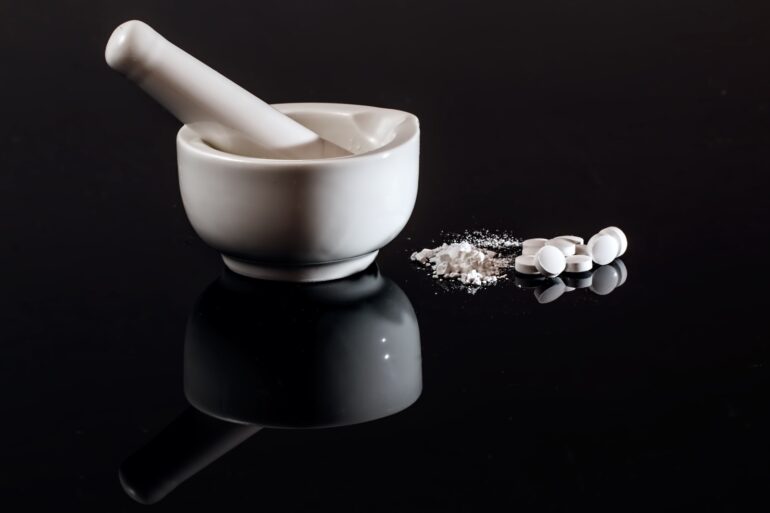In 2018, the general public is much more informed than they used to be about the pharmaceutical lobby and the problems of overmedication around the world, particularly in the United States, but I think few understand just how expansive this problem really is.
Ignoring for the moment all of the drugs prescribed for ailments that can largely be taken care of with lifestyle changes (obesity-related conditions, type 2 diabetes, certain forms of cancer), the major drugs often cited are those for ADD/ADHD (Adderall, Ritalin, etc.), pain (opioids), anxiety, and depression. There’s no doubt that the pharmaceutical industry is growing rapidly, as are its donations to political campaigns. Even President Donald Trump, who committed at the beginning of 2017 to lower drug prices by forcing pharmaceutical companies to make bids on prices, has yet to make good, and has even recently hired a former Eli Lilly executive as his administration’s Secretary of Health and Human Services.
Close to 60% of Americans are taking prescription drugs; 15% of Americans are taking five or more. Most of the time, if they specifically ask their healthcare providers if all of the drugs are necessary, the doctors will say no and eliminate at least one. Between the years 1997 to 2016, the U.S. population grew by 21% but the number of prescriptions (to both adults and children) grew by 85%. One in every six Americans takes a psychiatric drug (antidepressants, anxiety relievers, antipsychotics, etc.) – many of the conditions treated with these drugs can be treated in whole or in part by lifestyle changes and/or therapy. And in 2014, close to 1.3 million people went to the emergency room for adverse drug effects and about 124,000 of those died (U.S. government data cited by Consumer Reports). This infographic reveals some more astonishing (and disturbing) facts.
All this is without even mentioning the opioid crisis in America. Opioids are legal prescription painkillers that are highly addictive, widely available, and causing around 115 deaths every day on average in the United States.
And then there are the prices of these drugs, some of which are so prohibitively high that some people with fatal illnesses are given the choice between death and financially destroying their families. In most countries, there’s a bidding procedure in place in order to keep prices down. President Trump said over a year ago (in January 2017) that he planned to implement this but, as stated above, this has yet to be done.
What could be causing this meteoric rise in prescription drug use? Some say the rise in obesity is causing more obesity-related health issues and, rather than make major lifestyle changes, people prefer to take the magic pill that allows them to continue to eat processed foods without dying immediately (the food industry is its own pandora’s box of consumer manipulation). Others claim that there is more knowledge and acceptance of behavioral and mental health issues, which allows people to feel more comfortable seeking medical care. These two factors no doubt contribute to the rise in prescription drug use. However – and this is a big however – there seems to be something deeper taking place.
The United States is one of two countries in the world where direct-to-consumer advertising for prescription drugs is legal. One third of American consumers who have seen a drug ad have asked their doctors about that specific drug and two thirds of those have requested a prescription. It’s not news that pharmaceutical marketers have perfected the art of getting people to want what they might not need. Furthermore, the U.S. congress recently passed a bill by unanimous consent that makes it almost impossible for the DEA to deal with the black market opioid drug trade in the same way as their illegal counterparts, even though these cause more overdose deaths than heroin and cocaine combined.
In 2017, the pharmaceutical lobby had paid out close to $2.5 billion over the previous decade to politicians and political campaigns, making it the biggest lobby in the United States. It’s therefore no surprise that there are no American laws against advertising pharmaceuticals directly to consumers or that a bill making it harder for the DEA to crack down on illegally-obtained legal drugs was unanimously passed (how often do we hear about bills making it through Congress so easily?). Not to mention the complete lack of any system in place to keep drug costs low.
The drug companies may be full of brilliant medical researchers and lawyers but it doesn’t take much brilliance to see that the American public is being exploited so pharmaceutical executives and politicians can get rich. It’s no exaggeration to say that human lives are at stake and it’s time the people understand our own place in this billion dollar industry.
This is the first part in a two part series about the American pharmaceutical industry.





